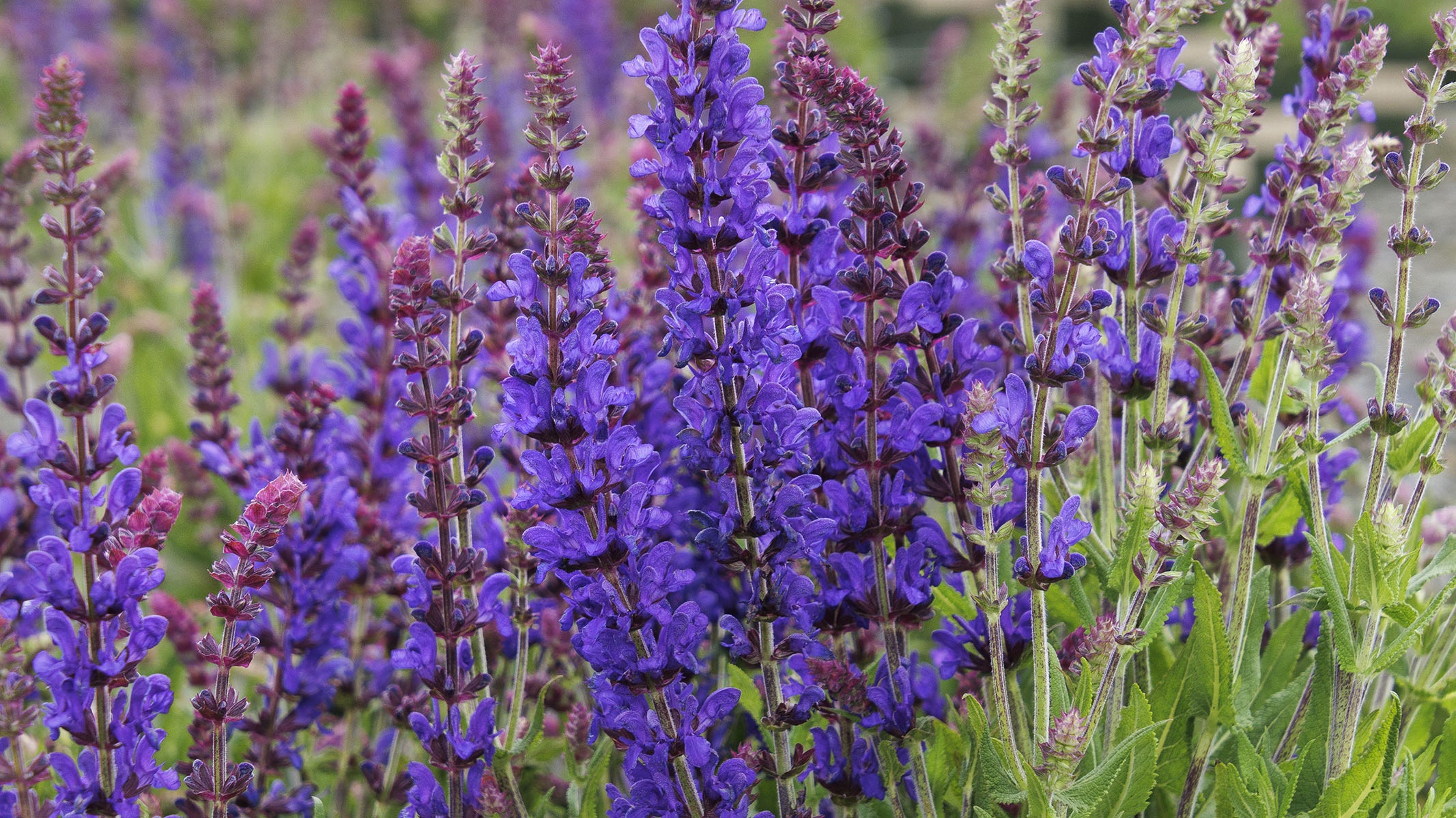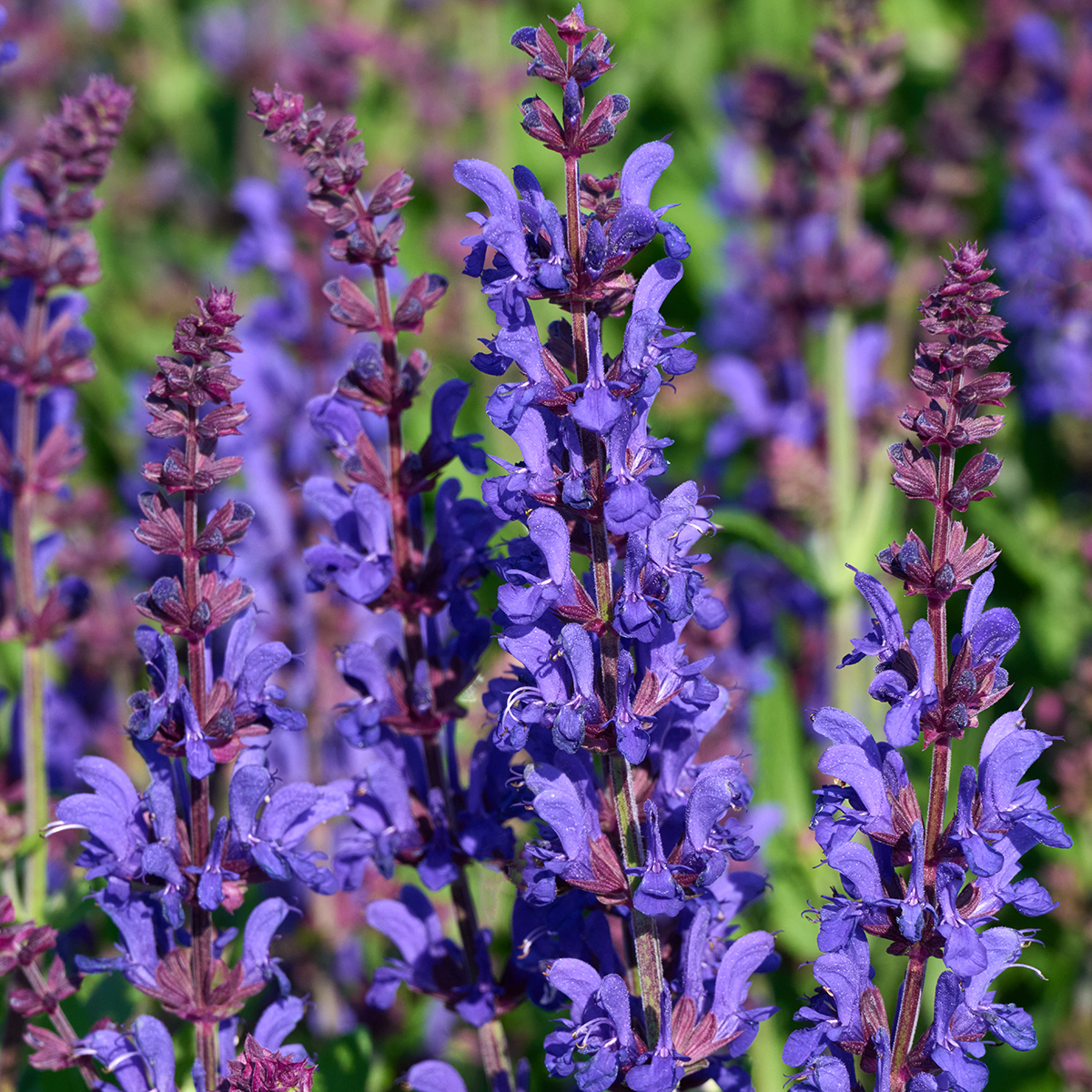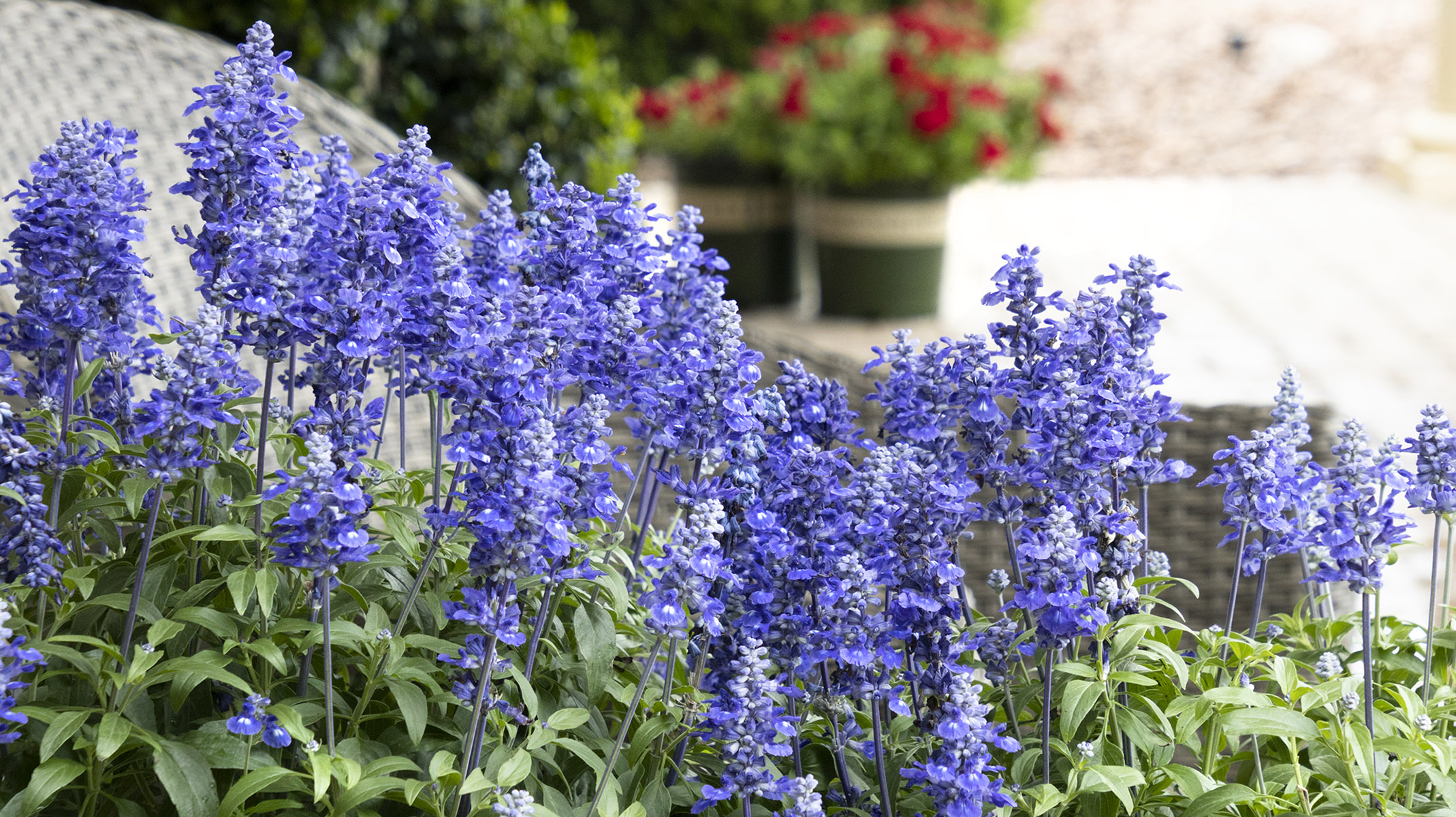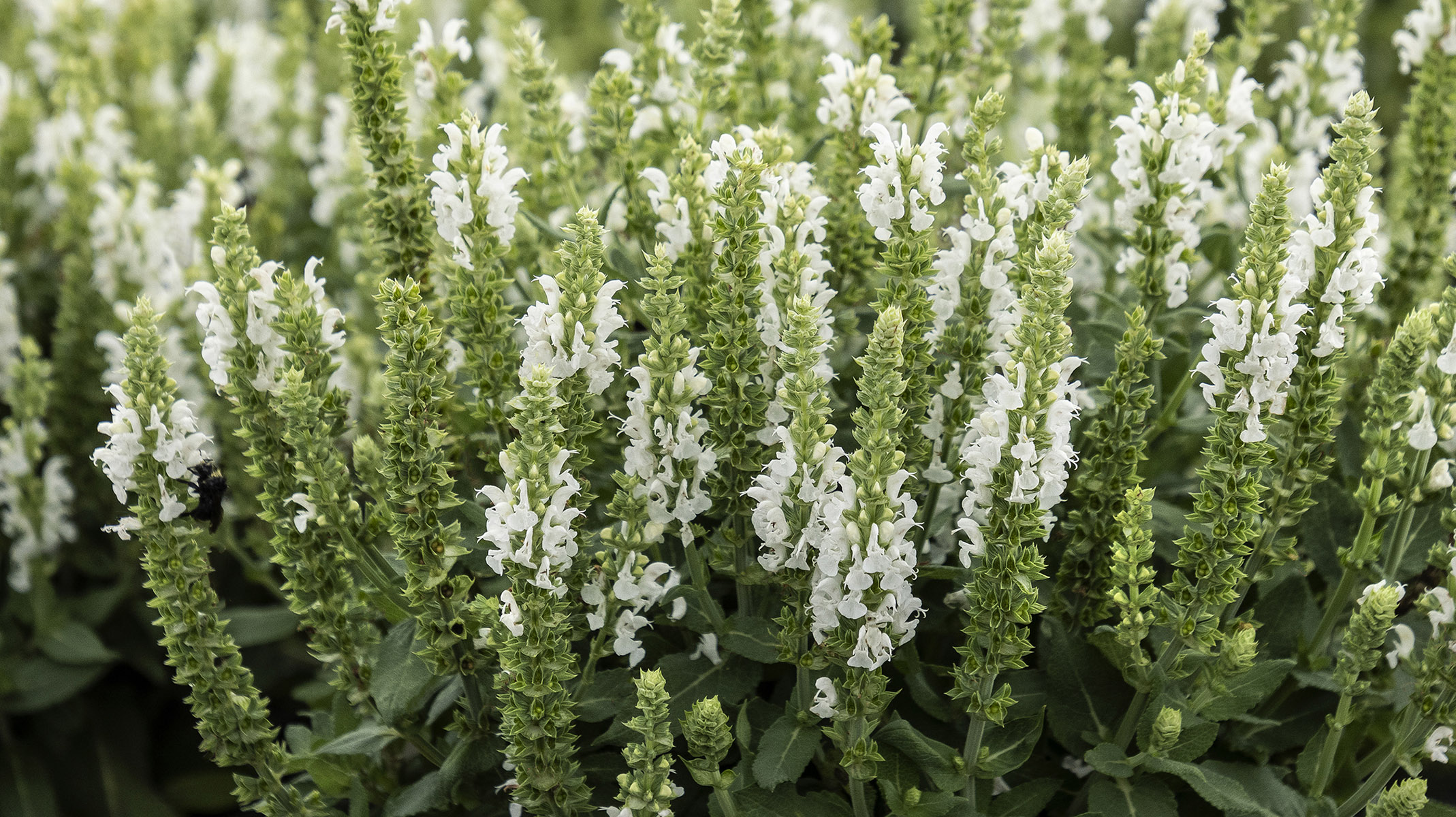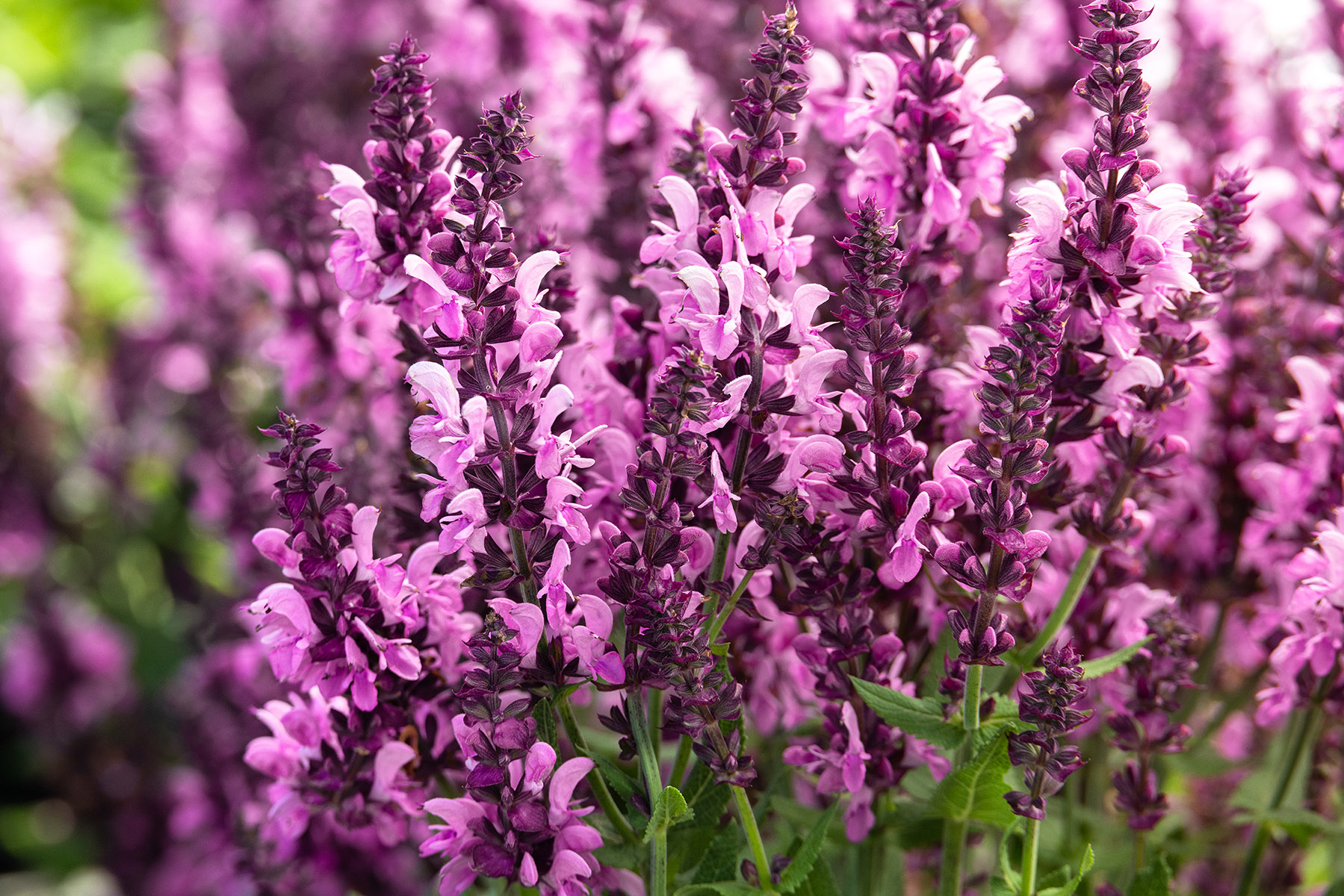Sage, a diverse member of the Salvia genus, offers a wealth of options for gardeners and cooks alike. From culinary varieties to ornamental showstoppers, these aromatic plants bring both flavor and beauty to any garden. As part of the expansive Lamiaceae family, Salvia species stand out for their fragrant leaves and eye-catching flowers.
Sage plants come in a variety of shapes, sizes, and colors, each with its own characteristics and care requirements. Some are prized for their culinary uses, while others are cherished for their ability to attract pollinators or serve as stunning landscape features.
Sage is an excellent choice for enhancing your herb garden, creating a pollinator-friendly space, or simply adding texture and color to your landscape. With proper care and attention, these versatile plants can thrive in many environments, rewarding gardeners with their aromatic presence and, in many cases, flavorful harvests.
Short on Time? Sage Advice in a Hurry
- Sunlight: Full sun (6+ hours daily); some afternoon shade in hot climates
- Soil: Well-draining, sandy or loamy; slightly acidic to neutral pH
- Water: Keep young plants evenly moist; water established plants when top 1-2 inches of soil dries
- Spacing: 1.5 to 2 feet apart
- Planting Time: Spring or fall; after the last frost for outdoor planting
- Fertilizer: Minimal; compost in spring is often sufficient
- Pruning: Remove old woody stems in spring; trim regularly during growing season
- Propagation: Stem cuttings in spring
- Container Growing: Use 8+ inch deep pots with drainage holes
- Pests to Watch: Slugs, spittlebugs, spider mites
- Common Issues: Root rot in wet soil, powdery mildew in damp conditions
Types of Salvia
The Salvia genus offers a diverse array of plants, each with its own charm and uses. Broadly, perennial salvias can be categorized into culinary and ornamental types, though some varieties bridge both worlds.
Culinary sages, primarily derived from Salvia officinalis, are kitchen staples. Some popular varieties include:
- Common Sage (S. officinalis)
- 'Purpurea' with striking purple leaves
- 'Tricolor' featuring a marbled mix of grey-green, white, and pink foliage
- Pineapple Sage (S. elegans) for a fruity twist
- Grapefruit Sage (S. gesneriiflora) for citrusy notes
Ornamental sages are showstoppers in the garden. Eye-catching options include:
- Meadow Sage (S. nemorosa) with colorful flower spikes on a hardy, low-growing plant. Varieties include:
- Dark Matter™ Meadow Sage: Floriferous sage with deeply purple flowers; reblooming.
- Rose Marvel Meadow Sage: Beautiful rose-pink flower spikes that rebloom without being cut back.
- Hybrid Sages (most commonly S. x jamensis) such as the Vibe® Ignition series
- Autumn Sage (S. greggii) with its rainbow of flower colors, including:
- Radio Red Autumn Sage: Compact salvia with large, bright red flowers; versatile garden use
- Mirage™ Rose Bicolor Autumn Sage: Compact sage with vibrant white-pink flowers; long-blooming, attracts pollinators.
- Mexican Bush Sage (S. leucantha) boasting white and purple flowers
- Hummingbird Sage (S. guaranitica) with deep blue flowers perfect for pollinators
Some salvias, like White Sage (S. apiana), serve both culinary and ornamental purposes. Its silvery foliage is visually striking, while its pine-like flavor adds depth to dishes. It is also the species burned for traditional spiritual ceremonies.
Whether you're a culinary enthusiast or a gardening aficionado, Monrovia carries a wide range of salvia varieties to suit every taste and landscape. Explore our diverse selection to find the perfect sage for your garden.
Planting Salvia
Timing is key when it comes to planting sage. Aim for mild weather in spring or fall to give your plants the best start. You can sow seeds outdoors around the last spring frost date or get a head start by starting them indoors 6 to 8 weeks earlier. If you're using nursery plants, wait until the frost danger has passed before setting them out.
Now, let's talk location. Sage loves sunshine and well-draining soil. If your garden doesn't offer these conditions, don't worry—sage grows beautifully in containers too.
When it comes to planting:
- Seeds: Sprinkle them on the soil surface and cover lightly. Because they're tiny, they don't need much soil on top.
- Nursery Plants: Plant them at the same depth they were in their nursery containers. No need to bury them deeper!
- Spacing: Give your sage plants some elbow room—about 1.5 to 2 feet apart is perfect.
Don't fuss with supports—sage plants are pretty self-sufficient and don't need staking.
Growing Sage in Containers
Don't have the perfect garden spot for sage? No problem! Sage thrives in pots, giving you the flexibility to create ideal conditions anywhere.
Here's how to get started:
- Choose the Right Pot: Pick a container at least 8 inches deep and wide. Unglazed clay pots are excellent choices, as they allow excess moisture to evaporate.
- Ensure Good Drainage: Make sure your pot has drainage holes to prevent waterlogged soil.
- Use Quality Potting Mix: Fill your container with well-draining potting soil designed for herbs.
- Position for Success: Place your potted sage where it will receive plenty of sunlight. The beauty of container growing is that you can easily move your plant to follow the sun or provide shade as needed.
Container-grown sage is perfect for patios, balconies, or even sunny indoor spots. It's a great way to enjoy fresh sage year-round, regardless of your garden space or soil conditions.
Caring for Your Sage Plants
Sage is pretty easygoing overall, but they do appreciate these little details. Get these basics right, and you'll be well on your way to a thriving sage patch that'll keep your garden (and maybe your kitchen) smelling wonderful for years.
Light and Location
Sage thrives in full sun, soaking up at least six hours of direct sunlight daily. This ensures the best flavor for culinary varieties. However, if you're in a hot climate (zone 8 or higher), your sage will appreciate some afternoon shade to avoid scorching.
Soil and Water
Sage prefers well-draining, sandy, or loamy soil with a slightly acidic to neutral pH. Here's a quick watering guide:
- Young Plants: Keep soil evenly moist, but not soggy
- Established Plants: Water when top 1-2 inches of soil dries out
- Always water at the base to avoid wetting the leaves
Temperature and Humidity
Sage is fairly adaptable but prefers temperatures between 60-70°F. It can handle some frost, especially the common varieties. In humid areas, ensure good air circulation to prevent fungal issues.
Feeding
Don't overdo it with fertilizer—sage isn't a heavy feeder. A bit of compost worked into the soil in spring is often enough. For culinary sage, less fertilizer actually leads to more flavorful leaves.
Pruning
Sage benefits from regular pruning to stay vigorous and flavorful. In spring, remove the oldest woody stems to encourage new growth. Despite good care, sage plants typically become too woody after about five years. At this point, it's best to replace them with new plants for better harvests. Regular trimming during the growing season helps maintain the plant's shape and promotes bushiness.
Sage plants are pollinator magnets, drawing bees and butterflies to your garden. With these basic care tips, you'll cultivate healthy herbs for your kitchen while supporting local pollinators. Your sage will thrive, and your garden ecosystem will benefit too.
Growing and Maintaining Sage
Propagation
Propagate sage through stem cuttings in spring when growth is active. This method is cost-effective and ideal for replacing woody, older plants.
Here's a quick guide:
- Take 4-6 inch cuttings from young, non-woody stems
- Remove lower leaves and any flowers or buds
- Dip cut end in rooting hormone
- Plant in moist, soilless potting mix
- Keep in bright, indirect light until rooted
Potting and Repotting
Use a well-draining potting mix for sage. Repot when roots grow out of drainage holes, moving up one pot size. Gently remove the plant, place it at the same depth in the new container, and fill it with fresh mix. Water thoroughly after repotting to settle the soil.
Overwintering
Protect outdoor sage plants with light mulch and shelter from harsh winds. For container plants, bring them indoors and place them near your brightest window. These steps ensure your sage survives winter and thrives in the coming growing season, whether in the garden or in pots.
Keeping Your Sage Healthy
While sage is generally a resilient plant, it can face a few challenges. Here's what to watch for and how to handle potential issues:
- Root Rot: Occurs in overly wet soil. Ensure proper drainage and avoid overwatering.
- Powdery Mildew: A fungal issue in damp conditions. Improve air circulation around plants.
- Slugs: These slimy pests love tender leaves. Use organic slug deterrents or traps.
- Spittlebugs: Creates foamy "spit" on stems. Rarely causes serious damage, but can be removed by hand or blasted with water.
- Spider Mites: Tiny pests that cause stippled leaves. Treat with insecticidal soap if the infestation is severe.
Most sage problems are preventable with proper care. If you notice any issues, act quickly. Removing affected parts and treating them with organic solutions usually does the trick. With a watchful eye and prompt action, you'll keep your sage plants thriving and productive.
Commonly Asked Questions About Salvia
Salvia is a multitasker in the garden. It attracts pollinators, has medicinal and culinary uses, and adds ornamental value to landscapes.
Yes! Sage is quite beginner-friendly. Give it plenty of sun and well-draining soil, and you're off to a great start.
Sage is a perennial in many areas, returning year after year. In colder climates, it can be grown as an annual or overwintered indoors.
Most Salvia species are non-toxic. However, some, like Salvia divinorum (sometimes called "purple sage"), have psychoactive properties and should be handled with caution.
Get More Plant Care Tips and Guides
- Sign up for the Grow Beautifully Newsletter. You'll get gardening tips, design ideas, free digital guides, and live webinar invites. Plus, new, exclusive plant information is delivered straight to your inbox twice a month.
- Shop all Salvia
- Find the Right Salvia for Your Garden
- Our Top 10 Gardening Tips
- Guide to Pruning Flowering Shrubs
- Find the Best Plants for Your Garden
- Inspiring Garden Ideas
- Check out the "Garden Tips" section of the blog. Here, you can find care guides and garden tips on various plants.




